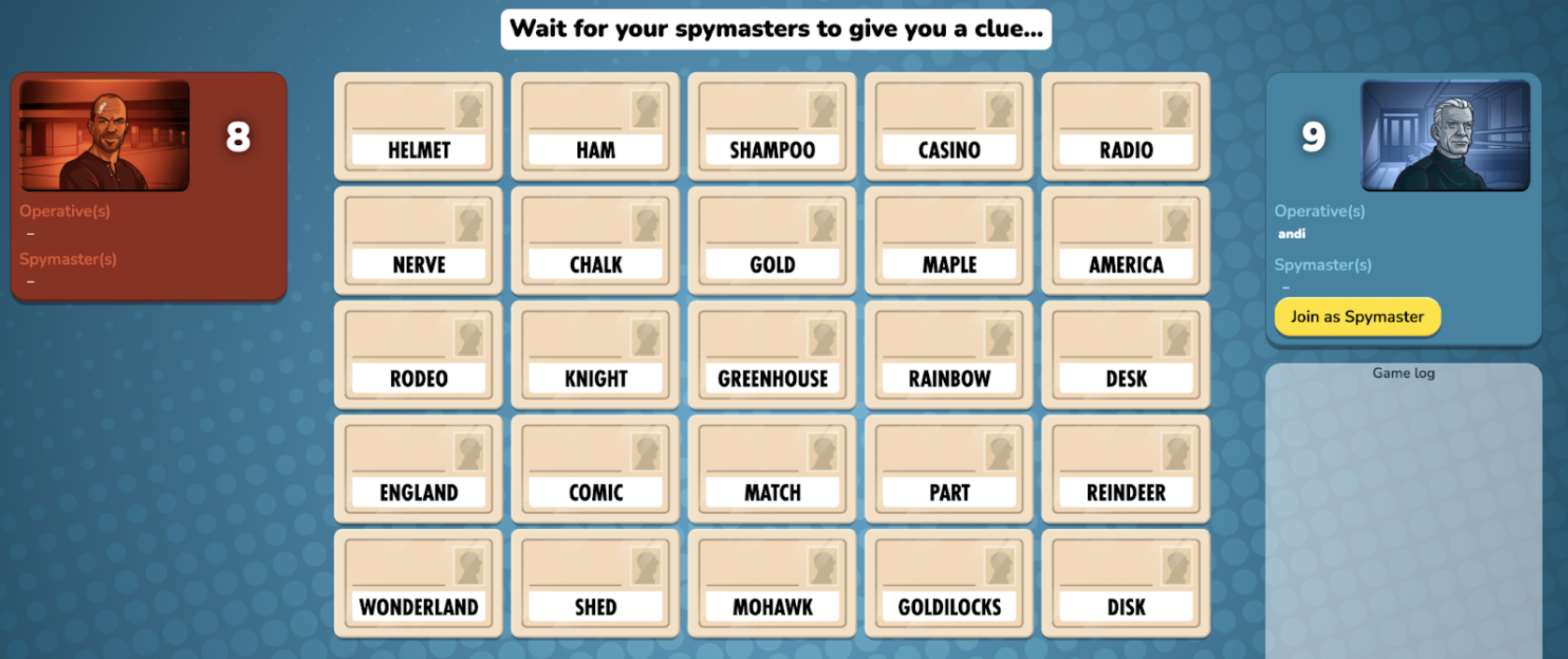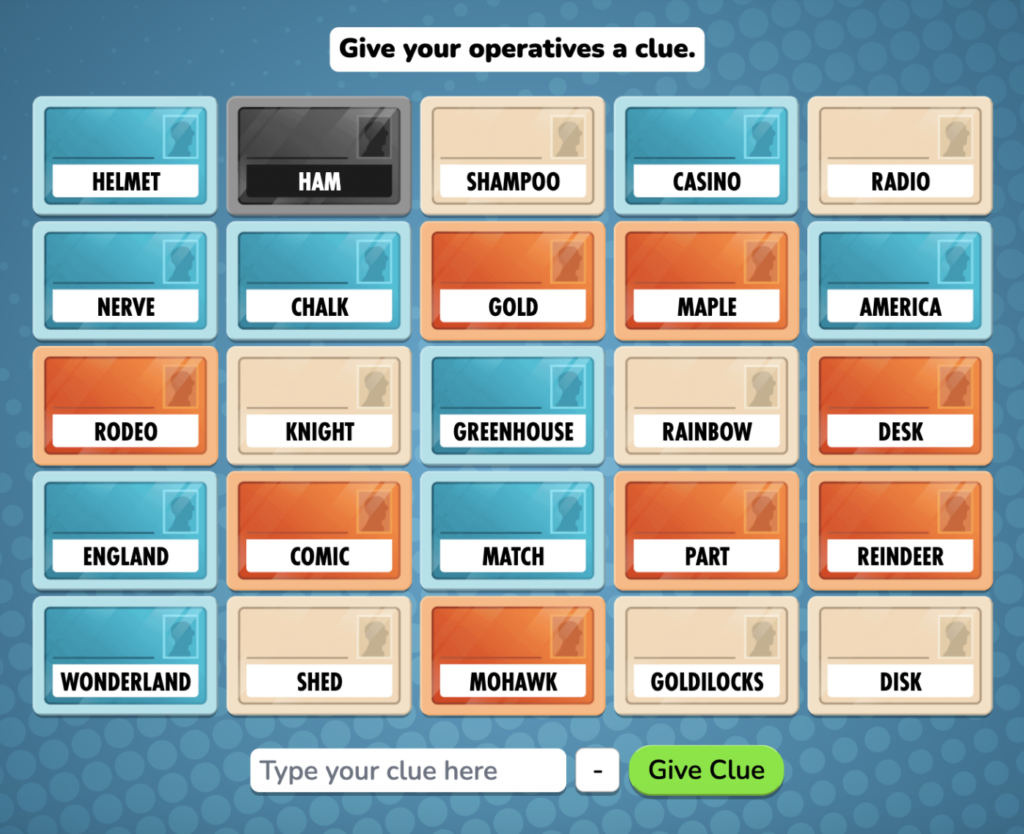Mechanics
Codenames is a cooperative game of 4+ people. You arrange a 5×5 grid of cards, each with a word on the front for all players to use. There are two teams of at least two people each. On each team, there is a spymaster who is given access to which cards in the grid belong to their team. The spymaster wants their teammates to guess which of the words in the grid are for their team and in each round they get a chance to give their team a single word and a number of cards for their team to use to try to guess which cards in the grid are theirs.
This mechanic of the hint only being a single word makes this game fun in a mentally challenging type of way. Of course, it also emphasizes fellowship fun since the teammates of the spymaster are almost trying to read their mind to guess what they’re thinking when they give a certain clue.
Theme
The story and theme of Codenames is not stressed strongly. The game is called codenames and the clue giver is called a Spymaster but beyond these titles, I totally forget about the “Spy” theme of the game while I’m playing. This is because a story is never introduced to the players. When I joined the online game, I was immediately taken to the board and didn’t make the connection that the Spymaster was really giving “codenames” for the words in the grid until I focused on the theme for this assignment. Not emphasizing the story and theme doesn’t hurt Codenames though, in my opinion. The real fun of the game isn’t in the fantasy of pretending to be a spy, but instead in the mental gymnastics of creating clues and the social mindreading to guessing words.
Business Model

Codenames was originally a board game which you would have to buy to play along with optional expansion packs. However, there is also an online free version that we played at https://codenames.game/. It makes sense for them to release this online version because in the age of so many people playing games remotely with their friends, Codenames can still be popular. I also believe that this is like free publicity for their board game. People who played Codenames online might love it so much that they buy it to play as a game at their house or with friends in person.
Graphics

I own the board game Codenames and have played it before and the graphics in the physical version of the game look almost identical to the online version. The game is visually very red/blue focused since there are always a red and blue team. The cards which all appear neutral to the non-Spymasters in the game and are a light brown which conveys this property nicely. Then when a card is guessed, it gets covered by either a red or blue card.
The online game is nicely interactive. In order for a team to guess a card, they click on it and it’s team is revealed. The Spymaster can also give the clue via text so it doesn’t even need to be played using Zoom although it seemed like it was much more fun being able to see everyone’s facial expressions and hear their voices.
My experience playing Codenames
Some critical elements of Codenames that worked well were the collaboration and the competition in the game. These factors really motivated players to think hard before they played their turn. I noticed that being on a team with your friends added a level of social pressure where if you messed up and gave the other team a point, there was a ton of guilt felt for letting down your team. Our final project game doesn’t involve any collaboration but I feel like teamwork made Codenames so much more fun through fellowship that I want to consider adding a team component to our game.
Something that surprised me was that the players on Zoom would sometimes turn their camera off as the Spymaster so as to hide their facial expression from giving too much away to their teammates. Codenames the board game was obviously not intended to be played this way but it’s actually a nice addition to keep bias out of the game. Given that our final project can be played through zoom, keeping your secrets secret by turning your camera off could be a strategy to suggest to our players too.
The critical element of random chance is a factor that plays a major role in both our final project game and Codenames. If you’re given an obscure word, you may be way more likely to lose the round than a word that can be used in lots of different ways. This can lead players to feel like the round was unfair and that they dealt a bad hand and if it’s too uneven, could lead to dropoff in adoption.
An element I thought should be added to Codenames is to include a time limit. I felt like the game sometimes lost a lot of momentum when the Spymaster would take up to 5 minutes to think of a good clue. The other team might become so impatient for their turn that they just want to end the game. It made me realize that adding a time limit to the rounds in our word guessing game could keep the energy and enthusiasm up throughout multiple rounds.


